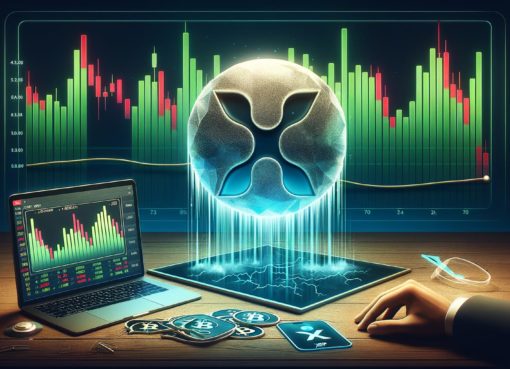A single tool for monitoring market changes with the ability to analyze all your assets quickly will allow you to reduce anxiety and make correct investment decisions.
The first is that volatility is commonplace in financial markets to deal with. Volatility reflects the changes in the price of any particular asset, showing how much the price has risen or fallen over time.
A more volatile asset is considered to be riskier as an investment. However, alongside possible higher losses, volatile assets also assume higher returns than relatively less volatile ones.
Crypto is a newer asset class whose potential upward and downward market movements in the short periods might be significant, making the asset volatile. Stocks’ volatility range is vast – from the relative stability of large-cap stocks, like Apple or Alphabet, to “penny stocks,” frequently fickle. But bonds, showing less sharp fluctuations up and down over more extended periods, on the contrary, are considered an asset with less volatility.
Unlike the stock and securities market, there are no indices similar to the Volatility Index (VIX) in the cryptocurrency market to measure price volatility. Historical price charts display how rapid peaks and depressive troughs of crypto prices happen faster than asset prices in major markets. Many remember Bitcoin price increasing by 125% in 2016, and next year reached a new record high of over 2000%. After this peak, the price of Bitcoin declined again till 2021; Bitcoin set new highs, more than tripling the peak price in 2017.
Nevertheless, the identical Bitcoin can be considered an example of an asset reducing its volatility over time due to higher trading volumes and increased institutional participation. On the other hand, altcoins, low-traded cryptocurrencies, or constantly creating new crypto assets, such as DeFi tokens, generally have higher volatility.
What Is the Risk Profile for Individuals?
Risk profiling is a process of detecting your risk appetites from traditional investment banking for individuals and companies. Risk profiling aims to understand the level of your risk tolerance and degree of portfolio volatility, which is comfortable for you. In other words, it’s your willingness and ability to take risks.
According to an analysis from Cesare Fracassi, Coinbase’s chief economist, digital assets nowadays have a similar risk profile to commodities such as oil and gas and tech and pharmaceutical stocks.
The majority of crypto investors are risk-takers. However, there is a grade of risk aversion where you could find yourself appropriate. To understand your risk profile, answer four simple questions:
- What percentage of invested money can I lose?
- Your portfolio declined by 15%; what are you going to do?
- What percentage of your wealth is at risk?
- How long do you plan to keep money invested?
Answers on that will give you more insights into which type of investor you are. There are no right or wrong answers here. There are no comprehensive tests for crypto investors, but you can check yourself with classic investment instruments by this link.
High volatility may be attractive to some crypto investors, as it creates the opportunity for increased profits. However, those who are less risk-averse can use tools to limit the negative impact of volatility. Below are five ideas on coping with high market fluctuations and using your crypto portfolio effectively.
Diversify Your Portfolio
Diversification is the distribution of funds in a portfolio between different assets – cryptocurrencies, stocks, bonds, blue chips, etc. Diversification is an excellent way to reduce overall portfolio volatility by redistributing asset-related risks.
However, more than just distributing funds between assets is required to reduce portfolio volatility. The main thing is to put only some of the eggs in one basket and invest in tokens of different networks to reduce the correlation between each other.
Asset correlation measures how different assets move relative to each other. Generally, this indicator reflects the degree to which the particular two assets change interlinkages.
For example, the story of crypto streamer “Chansers” from South Korea shows how an unbalanced portfolio could be dangerous. He lost almost $2m because of the collapse of Terra (Luna) in May 2022. A high correlation between UST and LUNA and his belief in one project was risky.
A visual way to study correlations in crypto is to make a sample of several coins, including BTC, ETH, and DOGE, with the highest 30–day trading volume by a specific date and a price history of at least three years, according to CoinMarketCap. The observations show no single negative correlation between crypto assets in the matrix. On the contrary, all crypto assets showed positive correlations; the average correlation was 48%, indicating a common risk factor. The lowest level of correlation has DOGE; however, it is quite a speculative coin.
The conclusion is that to reduce the co-directional risk, there should be less correlation between coins. Cryptocurrency is a volatile but diversifying asset for portfolios exposed to traditional risk factors. Research indicates that there are significant relationships between crypto assets, which suggests that investors should diversify their portfolio among several coins, networks, and other assets – stocks, bonds, and securities. The easiest way to keep a portfolio balanced without extra complicated instruments is to check it with a pie chart in your portfolio tracker app.
Do Not Forget about Stablecoins
When distributing funds among the various assets of your portfolio, remember stablecoins. Being the least volatile of all crypto assets, it is a good tool for stabilizing portfolio price changes and reducing overall volatility.
From the trading point of view, stablecoins are not attractive. This is because they are tied to real money and do not grow in price. However, if your goal is to create a risk-resistant portfolio, this compromises risk, volatility, and profitability. Thus, the more you accept the risk, the lower costs to store stablecoins.
In general, stablecoins are about low volatility, high liquidity, and acceptability. Tether (USDT) is one of the oldest stablecoins and the most popular today. It is one of the most valuable cryptocurrencies in terms of market capitalization. USDT quickly moves money between exchanges and transfers from account to account. A vast network of organizations accepting this currency as payment for goods and services is constantly growing. The market suggests good options among them: USDC, Dai, and others.
Play a Long Game
Even though cryptocurrency is perceived by many as an opportunity to make quick money on speculation, there are proponents of playing a long game.
HODL is a strategy example of a long-term approach to cryptocurrency investing. Appearing as a typo of the term “hold” in the context of investing, it was interpreted as an acronym for “hold on for dear life.” The idea is that traders might fail to time the market, so they should just hold their coins, even if markets crash or become extremely volatile.
This approach is criticized, but such a strategy allows the cryptocurrency market to grow and stabilize and not just be a platform for making money on fluctuations of specific coins.
The cryptocurrency market is growing and gaining value. At the same time, the rising prices of large-cap coins are declining throughout the crypto world. Coins that grow only because the most efficient coins have driven the market up may slow down over time.
You can earn new small-cap coins at an early stage of increasing their value. However, as the market matures, it is also wise to include top coins and blue chips in your portfolio.
Look for the growth potential of the assets you want to invest in. Market analysis is a good practice for predicting future coins’ value trends based on past indicators. For example, some tokens have a history of increasing value along with the general market, but at the same time by several percentage points more than the market average. If these dynamics are consistent, the coin will continue outperforming the market during the general price increase. Analyze the trends of growth and decline of indicators, and you will be able to identify assets that provide a high return on investment.
Investing in stages is another way to minimize risks. Even if some of your investments turn out to be unsuccessful because the price has fallen after that, your losses are compensated by earlier investments. It also makes sense to sell your assets in stages. In the absence of confidence that you will get the maximum price for the tokens that you sell, you can sell them gradually and in parts. This method smooths out market fluctuations and helps you maintain the overall value of your portfolio.
The growing market is tempting investors to keep staying to get higher returns. Until at one moment, there will be a collapse in prices, and your portfolio, respectively. Therefore, some experts advise you to prepare your exit strategy in advance, for example, when your portfolio reaches a certain price. This will have the risk of missing out on some additional growth, but at the same time, it will be possible to protect your profits from falling prices.
Know How to Check the Market
The effective use of a portfolio also depends on your approach to information consumption. Every hour scrolling over the crypto market news might lead you to skip essential signals and focus on much less significant and useful ones.
This is possible because the framing effect when presenting the information can influence accepting decisions. The information can be more or less attractive, with positive or negative aspects highlighted. In the context of investing, it is important because people usually prefer a choice framed in terms of gains rather than framing it in terms of losses. When we are convinced we have something to gain, we are more likely to take action. And it’s crucially essential to properly assess how much risk we are willing to assume to avoid a loss.
Unverified information received from various channels, interpreted by personal preferences, can cause other problems – anxiety and fear of missing out, or just FOMO. In the crypto sphere, FOMO leads people to make irrational decisions in investing or trading, like buying crypto assets at their highest prices or even selling them at their lowest.
To avoid all this and be effective in the market, systematize the process of information consumption. Check your portfolio balance at certain times, for example, in the morning, with the crypto portfolio tracker app. The visual form also matters so the dashboard in the tracker app might be a convenient and helpful tool.
Use a Unified Dashboard
A single tool for monitoring market changes with the ability to analyze all your assets quickly will allow you to reduce anxiety and make correct investment decisions. For this, such apps, as for example, NOW Tracker can be of great use for you. With such solutions, you can monitor the market and all your wallets and track stocks on one dashboard. This will help to have a complete market picture, reduce the portfolio’s dependence on specific brands, store funds in different wallets, and manage the portfolio from a single application.
Please check out latest news, expert comments and industry insights from Coinspeaker’s contributors.




